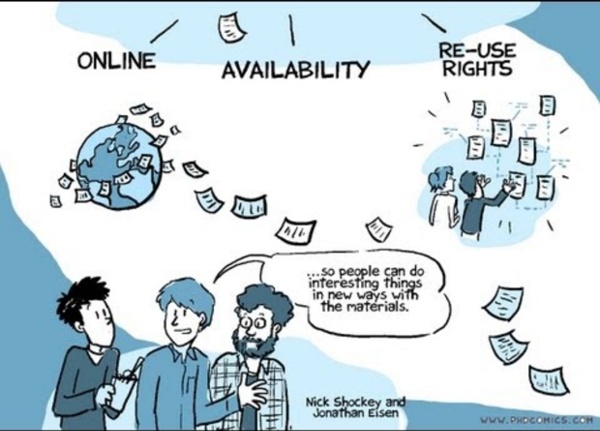UNESCO, WHO and the UN High Commissioner for Human Rights call for “open science”
acknowledging “the power of scientific cooperation and diplomacy to unite nations” Scientific discoveries and advances must be shared, according to the Declaration in favour of “open science”, science that is unhindered by barriers and frontiers, which was made jointly on 27 October by the United Nations Educational, Scientific and Cultural Organization (UNESCO), the World Health Organisation (WHO) and the Office of the United Nations High Commissioner for Human Rights (OHCHR). The COVID-19 epidemic demonstrates the urgent need to strengthen scientific cooperation and to guarantee the fundamental right of universal access to scientific progress and its applications.
ClipArt ETC: Free Educational Illustrations for Classroom Use
Alphabets The Alphabets ClipArt collection offers 1,193 illustrations arranged in 43 galleries including decorative letters and numerals, complete alphabet sets, and several sign language systems. If you are looking…
Open Educational Resources: Reliable or Not?
With our economy on the ropes and the cost of education rising, the Open Education movement does make a lot of sense. Open Educational Resources are resources that are used from teaching, learning, and even research for up to little or no cost. The idea behind it is to improve education without raising the cost.
Open-access plan draws online protest
Hundreds of scientists are pushing back against Plan S, a plan to crack down on scholarly journals’ paywalls, launched 2 months ago by 11 national research funders in Europe. In an open letter published on 5 November, about 800 signatories say they support open access (OA)—making papers available free to all readers online—but condemn Plan S as “too risky for science.” The letter slams the plan’s decision to stop paying for researchers to publish in so-called “hybrid” journals of scientific societies such as the American Chemical Society.
Students: copycat, sort of
One way I often suggest to my students to improve their writing ability is to read a lot. When doing so, I suggest they notice how writers use grammar, vocabulary, punctuation and organisation. I recommend trying to incorporate these samples into their own writing.
Teacherpreneurs: Innovative Teachers Who Lead But Don't Leave
It's time for a bold new brand of teacher leadership. Follow the journeys of eight American teachers who are exceptional, but not exceptions. Teacherpreneurs (Jossey-Bass, 2013) demonstrates why and how innovative career pathways can help expert teachers benefit more students.
Syndication Success: A Report from the Springer Nature and ResearchGate Pilot
Today, ResearchGate and Springer Nature are jointly announcing the findings of their syndication pilot. In this partnership, as we have previously analyzed, Springer Nature distributes the version of record of articles from several dozen journals to ResearchGate for access. Users with institutional entitlements can download the PDF, while other users are presented with a read-only version.
Educational Technology and Mobile Learning: What Teachers Need to Know about Creative Commons
some of the digital elements our students use so often are photos and images. They include them in their blog posts and wikis and some even share them on popular social networking sites like Facebook. As a rule of thumb the first resource they have recourse to when looking for such images is image search engines like Google Image. But do they know that images are not created from the void and that they have their owners and therefore some reserved rights as to the republication of their images ? Do they know that there is something called Creative Commons which regulate the use and re-diffusion of copyrighted materials online ?
Teachers Who Share
While I know that like any profession, there are good teachers and bad teachers, I don’t see many bad ones. My work usually has me working with passionate, caring teachers who truly want what’s best for kids. They dislike bureaucracy and red tape (doesn’t everybody?) and will try anything if they think it will help students learn. I do know of a few teachers who do not fit this bill but honestly, not very many.
Open Access: A Look Back
Open Access Week 2018 has begun, and as happens each year, I’m never quite sure how The Scholarly Kitchen should (or shouldn’t) participate. This blog has long (unfairly, in my opinion) been cast as “the enemy” of open access (OA). The reality is, as with most things OA, more complex once you get past the sloganeering. To me, the questions have never been about the concept behind OA (more availability of high quality information is a good thing for the world), but rather the implementation. We’ve been stuck in something of a loop for the last decade, knowing that OA is a good idea, but never getting past flawed ways to put it into action (author-pays Gold OA, which merely shifts the point of inequity from the reader to the author; Green OA which, if efficiently implemented threatens to destroy the subscription journals upon which it relies; and an insistence on one-size-fits-all policies). At The Scholarly Kitchen we try to learn from our mistakes.


